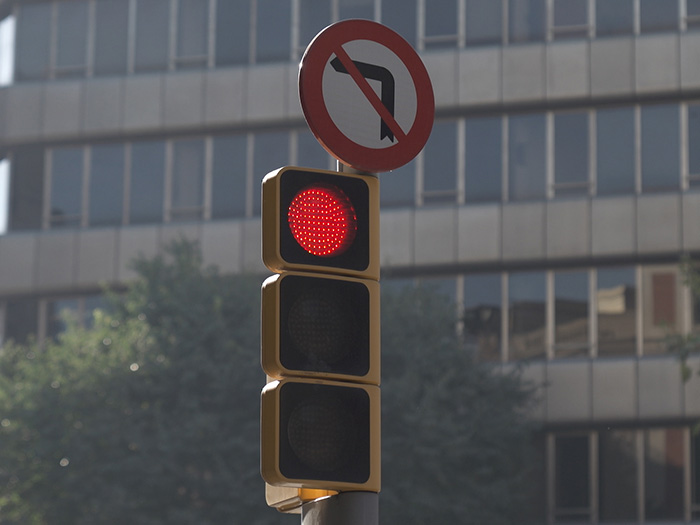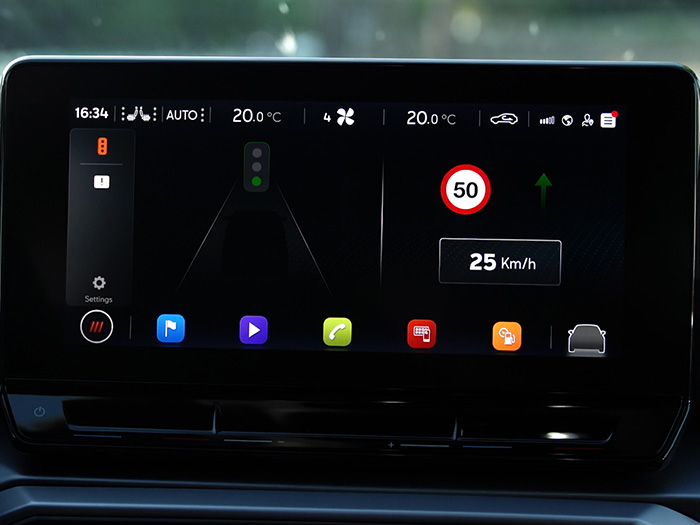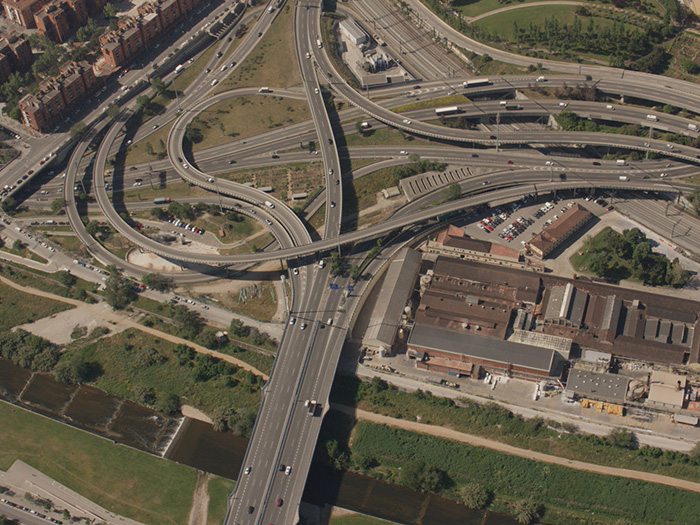Safety and efficiency - the car that communicates with traffic lights
A project sponsored by SEAT connects vehicles with traffic lights and information panels via the DGT 3.0 platform.
Green, yellow or red? What colour will the next traffic light be? Sometimes drivers can guess or use their intuition, perhaps on a route they know well. But for sure it would be better to receive accurate information through technology.
This is one of the goals of the project supported by SEAT, in collaboration with the Spanish Traffic Authority (DGT), the Barcelona City Council and the technology firm ETRA, which connects vehicles with traffic lights and the traffic control centre so drivers know what is ahead and can moderate their speed accordingly.
Information in real time
The technology used in the project also enables information on traffic lights and motorway incidents to be sent directly to vehicles in real time without the need for information panels, bringing cars and infrastructure together via the cloud using cellular technology with latency times of 300 milliseconds.
The vehicle used in this pilot project is equipped with the necessary technology to connect with its surroundings and receive information uploaded by the Traffic Authority to the cloud. This in turn enables the driver to anticipate what lies ahead in real time.
Communicating with traffic lights

One part of the project consists of linking cars with traffic lights. The traffic light sends a signal to the cloud with its current status and a notification of when it is going to change. The car receives this information, interprets it and alerts the driver of the traffic light’s colour, taking the driving speed into account.
“This is useful if it is about to change to red, as drivers can begin to decelerate before reaching the traffic light”, explains Jordi Caus, the Head of Urban Mobility Concepts at SEAT.
Safety first

So, how does the system actually work? When a vehicle is approaching a traffic light, an alert appears on the screen showing whether it will be a red, green or yellow light when it arrives, as the system performs a calculation based on how far away the car is and its current speed.
For safety reasons, the system only works as long as the vehicle is not exceeding the speed limit. “The system does not work at higher speeds, which is very important for road safety. It aims to be an auxiliary tool that enables motorists to drive more smoothly”, says Manuel Valdés, the Head of Mobility and Infrastructure at Barcelona City Council.
Traffic and roadworks

Today there are 2,000 information panels in Spain that provide drivers with traffic and weather conditions, information about roadworks or accidents. With this system, all of the information is displayed directly on the screens of connected vehicles at any point of the road network.
The goal of the project is to increase safety through better information and, at the same time, make driving more efficient. “We are aiming for a significant reduction in the number of accidents, less vehicle traffic and therefore, a positive effect on the environment”, says Jorge Ordás, deputy director of Mobility and Technology at the Spanish Traffic Authority.
Information sharing
In addition, connected cars and users themselves can become information suppliers. Anyone with information about what’s happening on the road can share it so other users will be warned of any incidents in advance.
“With this project we're taking the first step towards connecting cars with overall traffic infrastructure. We've begun with information functions, but in the future autonomous vehicles will be able to act directly on this data to drive safely”, says Caus.
Source: SEAT S.A.
